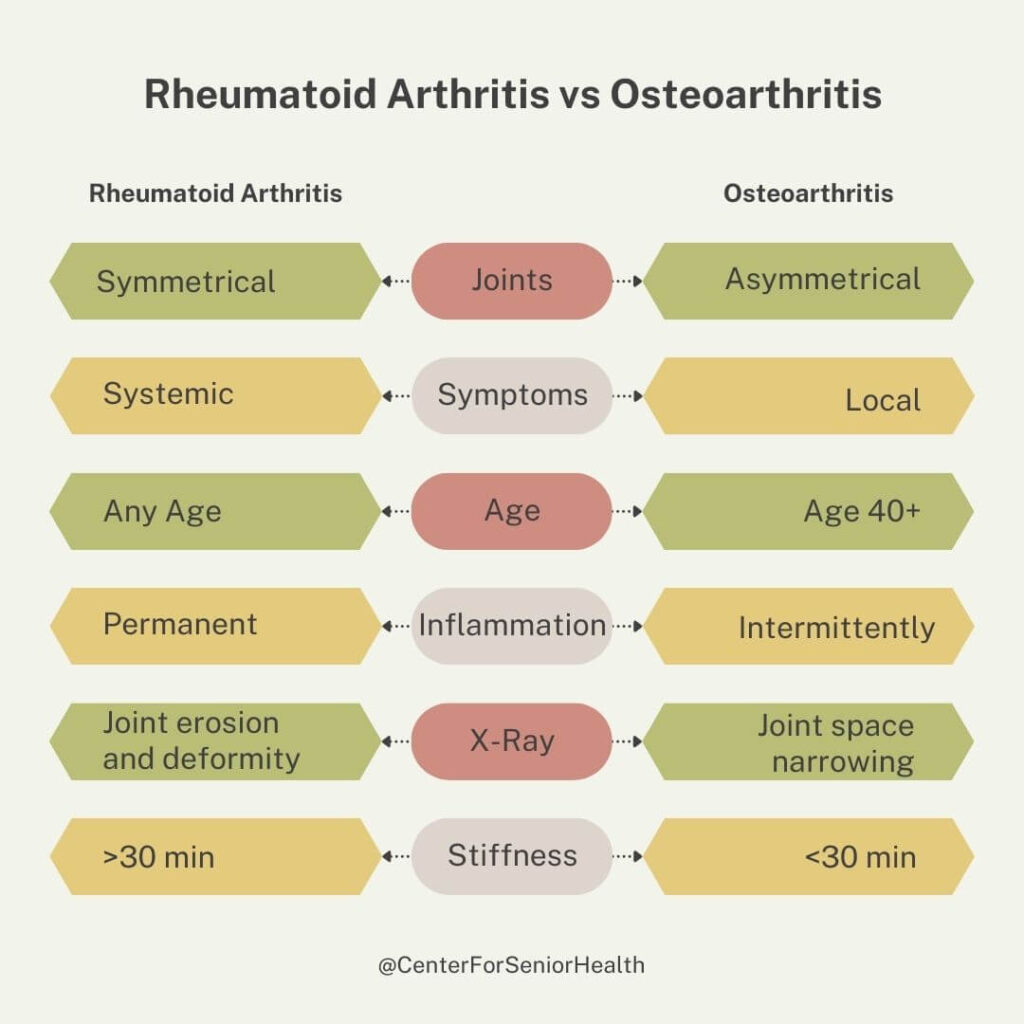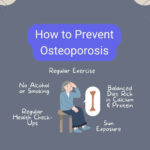Similar to osteoarthritis and rheumatoid arthritis, Chondromalacia is a common discomfort among senior citizen, specifically those who like to engage in intense workouts. The knee condition is also known as “runner’s knee” and affects the cartilage under the kneecap, causing pain, swelling, and a disconcerting grinding sensation in the knee joint.
Facts On Chondromalacia
Prevalence Among Men and Women
Chondromalacia patella is a condition that affects both men and women, although it is more prevalent in women. This may be due to anatomical differences between the sexes, such as variations in muscle mass and thickness around the knee joint. Women tend to have less muscle mass and thinner cartilage, making them more susceptible to developing chondromalacia.
Common Among Athletes and Individuals with Repetitive Knee Movements
Chondromalacia is particularly common among athletes and individuals who engage in repetitive knee movements. Sports like running, soccer, basketball, and cycling often involve constant stress on the knee joint, leading to wear and tear of the cartilage. The repetitive impact can gradually break down the protective layer of cartilage, resulting in chondromalacia.
Sports-Related Injuries
It is estimated that approximately 15% of all sports-related injuries involve chondromalacia. This statistic highlights the significant impact this condition has on athletes across various disciplines. The high prevalence in sports underscores the importance of proper training techniques, adequate rest periods, and appropriate protective gear to minimize the risk of developing this condition.
Incidence Increases with Age Due to Wear and Tear
As individuals age, their joints undergo natural wear and tear. This degenerative process can contribute to an increased incidence of chondromalacia over time. The gradual breakdown of cartilage within the knee joint can lead to pain, stiffness, and discomfort associated with this condition. It is crucial for older individuals to maintain a healthy lifestyle that includes regular exercise aimed at strengthening muscles around the knees while minimizing excessive stress on the joint.
Understanding the Causes of Chondromalacia
Chondromalacia is a condition that affects the knee joint and can cause pain and discomfort. It occurs when there is abnormal alignment or tracking of the patella, also known as the kneecap.
The hyaline cartilage, which acts as a cushion between the femur and tibia, can become damaged due to repetitive stress or misalignment. When this protective layer wears down, it exposes the subchondral bone beneath it. The friction between these two surfaces results in discomfort and inflammation.
Let’s take a closer look at some of the common causes of chondromalacia.
Abnormal Alignment or Tracking of the Patella
One of the main causes of chondromalacia is an abnormal alignment or tracking of the patella. The patella normally moves up and down in a groove at the end of the thigh bone (femur) as we bend and straighten our knees. However, if there is an imbalance in muscle strength or tightness, it can lead to misalignment. This misalignment puts excessive pressure on certain areas of the patellar cartilage, causing it to wear down over time.
Overuse or Repetitive Stress on the Knee Joint
Overuse or repetitive stress on the knee joint is another factor that can contribute to the condition. Activities that involve frequent bending and straightening of the knees, such as running, jumping, or squatting, can put excessive strain on the patellar cartilage. This constant pressure and friction can gradually wear down the cartilage.
Weak Thigh Muscles
Weak thigh muscles, especially quadriceps, play a crucial role in maintaining proper alignment and tracking of the patella. When these muscles are weak or imbalanced, they may not provide adequate support to keep the kneecap in its correct position during movement. As a result, it can cause patellar misalignment and increase the risk of developing chondromalacia.
To strengthen your quadriceps muscles and help prevent chondromalacia, you can incorporate exercises like squats, lunges, leg presses, and step-ups into your fitness routine. Building strength in these muscles can provide better stability to the knee joint and reduce the risk of developing this condition.
Trauma or Injury to the Knee
In some cases, chondromalacia can be caused by a traumatic injury to the knee.
Recognizing and Diagnosing Chondromalacia Symptoms
Pay close attention to the symptoms below for diagnosis and treatment.
Pain around or behind the kneecap during activities like walking, running, or climbing stairs
One of the primary symptoms is pain in and around the kneecap. This pain can be particularly noticeable during activities that involve bending or straightening the knee joint, such as walking, running, or going up and down stairs. The pain may start off mild but can worsen over time if left untreated.
To better understand your symptoms, your healthcare provider will likely ask you specific questions about when and how often you experience this pain. It’s important to provide detailed information about any triggers that exacerbate the discomfort. This will help them make an accurate diagnosis.
Swelling and tenderness in the affected area
In addition to experiencing pain, individuals with chondromalacia may also notice swelling and tenderness in the affected area. The knee joint may feel warm to touch due to inflammation caused by damage to the cartilage beneath the kneecap.
During a physical examination, your healthcare provider will carefully assess your knee for any signs of swelling or tenderness. They may gently press on different areas surrounding your kneecap to identify specific points of discomfort. This evaluation helps them determine if chondromalacia is indeed present.
Audible grinding or cracking sound when moving the knee joint
Another common symptom associated with chondromalacia is an audible grinding or cracking sound when moving the knee joint. This noise is known as crepitus and occurs due to irregularities in the cartilage surface. It may be more noticeable when you bend or straighten your knee.
While this symptom alone is not enough to diagnose chondromalacia, it can provide valuable clues to your healthcare provider during a physical exam. They will listen for these sounds and take them into consideration along with other symptoms and diagnostic tests.
Risk Factors for Chondromalacia
Participating in high impact sports
Playing high impact sports such as basketball, soccer, or gymnastics can increase the risk of developing chondromalacia. These sports involve sudden movements, jumping, and repetitive stress on the knees. The constant pounding and twisting motions put excessive pressure on the joint surfaces, leading to wear and tear of the cartilage. Athletes who engage in these activities regularly are at higher risk due to the repeated trauma endured by their knee joints.
Poor biomechanics or abnormal gait patterns
Another significant risk factor is poor biomechanics or abnormal gait patterns while walking or running. When your body’s alignment is off, it can place excessive stress on specific areas of your knees, including the cartilage. For example, if you have flat feet or high arches, it can disrupt the normal distribution of weight across your feet and legs. This imbalance can lead to increased pressure on certain parts of the knee joint, contributing to chondromalacia development over time.
Muscle imbalances around the hip and thigh area
Muscle imbalances around the hip and thigh area also play a role in increasing the risk of chondromalacia. When certain muscles become weak or tight compared to their counterparts, it can affect how forces are distributed through your lower extremities during movement. Imbalances between quadriceps and hamstring strength, as well as weak gluteal muscles, can alter knee mechanics and place additional stress on the joint surfaces. Over time, this imbalance may contribute to cartilage damage and eventually lead to chondromalacia.
Previous history of knee injuries or surgeries
Individuals with a previous history of knee injuries or surgeries are at a higher risk for developing chondromalacia. Injuries such as ligament tears or dislocations can alter the stability of the knee joint and disrupt the normal mechanics. This instability can result in abnormal wear and tear on the cartilage, making it more susceptible to damage. Similarly, previous surgeries involving the knee can also impact joint mechanics and increase the likelihood of chondromalacia development.
Comprehensive Guide to Treating Chondromalacia Patella
If you’re dealing with chondromalacia patella, it’s important to understand the various treatment options available to alleviate your symptoms and improve your knee health.
RICE Therapy for Initial Relief
When you first experience pain from chondromalacia patella, one of the most effective initial treatments is RICE therapy. This acronym stands for Rest, Ice, Compression, and Elevation. These simple steps can help reduce pain and inflammation in your knee.
- Rest: Take a break from activities that worsen your knee pain. Avoid high-impact exercises or sports that put excessive strain on your knees.
- Ice: Apply an ice pack to your knee for 15-20 minutes several times a day. The cold temperature helps reduce swelling and numbs the area, providing temporary relief.
- Compression: Use an elastic bandage or compression sleeve to wrap around your knee snugly but not too tight. Compression helps control swelling and provides support to the joint.
- Elevation: Elevate your leg by propping it up on pillows or cushions when sitting or lying down. Keeping your knee elevated above heart level reduces fluid buildup and promotes faster healing.
By following these simple steps, you can give yourself some immediate relief while preparing for further treatment options.
Physical Therapy Exercises for Strengthening
Physical therapy plays a crucial role in treating chondromalacia patella by strengthening the quadriceps muscles and improving knee alignment. A skilled physical therapist will design an exercise program tailored specifically to address your condition.
Quadriceps Strengthening
Strengthening the quadriceps muscles is essential for stabilizing the kneecap and reducing pain. Exercises like straight leg raises, squats, and lunges help build strength in these muscles.
Patellar Realignment Exercises
One exercise you can try is called the quad set. To do this exercise, sit on a chair with your legs extended in front of you. Tighten the muscles on the top of your thigh and hold for a few seconds before releasing. Repeat this exercise for about 10-15 times.
Another exercise you can do is called the straight leg raise. Lie on your back with one leg straight and the other bent. Slowly lift your straight leg off the ground, keeping it as straight as possible, and hold for a few seconds before lowering it back down. Repeat this exercise for about 10-15 times on each leg. Remember to start with low repetitions and gradually increase as you get stronger. These exercises can help improve the stability of your knee joint and reduce pain caused by chondromalacia.
Exploring Non-Surgical Treatment Options for Chondromalacia
NSAIDs: Short-Term Pain and Inflammation Relief
Nonsteroidal anti-inflammatory drugs (NSAIDs) are often recommended as a first-line treatment option. These medications help reduce both pain and inflammation associated with the condition. By targeting the underlying inflammatory response in the knee joint, NSAIDs can provide much-needed relief for individuals suffering from chondromalacia.
Using over-the-counter NSAIDs like ibuprofen or naproxen sodium can be effective in managing mild to moderate pain. However, for more severe cases of chondromalacia, your doctor may prescribe stronger prescription-strength NSAIDs. It’s important to follow your healthcare provider’s guidance regarding dosage and duration of use to minimize any potential side effects.
Red Light Therapy: Long-Term Pain & Inflammation Relief
Red light therapy is a promising treatment for chondromalacia. Compared to NSAIDs, red light therapy is non-invasive and may thus be a more sustainable way to help with chondromalacia pain long-term.
Red light therapy uses the energy of specific wavelengths (usually 660nm red light and 850nm near infrared light) to improve adenosine triphosphate (ATP) production in our cells, thus increasing cellular energy which stimulates different processes in the body that impact the perception of pain.
Additionally, red light therapy has anti-inflammatory effects that further aid the treatment of chondromalacia.
For more information on red light therapy, make sure to read our article about red light therapy.
Corticosteroid Injections: Targeting Severe Cases
In some instances where conservative measures alone aren’t sufficient, corticosteroid injections may be recommended by your healthcare professional. These injections are designed to deliver powerful anti-inflammatory medication directly into the affected area of the knee joint.
By administering corticosteroids locally, doctors can effectively reduce inflammation and alleviate pain associated with chondromalacia. This treatment option is particularly beneficial for individuals experiencing severe symptoms that significantly impact their daily activities or quality of life.
However, it’s important to note that corticosteroid injections are not suitable for everyone and should only be administered under medical supervision. Your doctor will evaluate your specific condition before determining if this treatment approach is appropriate for you.
Platelet-Rich Plasma Therapy: Promoting Cartilage Healing
Platelet-rich plasma (PRP) therapy has gained popularity as a nonsurgical treatment option for various musculoskeletal conditions, including chondromalacia. This innovative approach utilizes your body’s own healing properties by extracting a concentrated solution of platelets from your blood and injecting it into the affected knee joint.
The platelets in PRP contain growth factors that can stimulate tissue repair and regeneration. When injected into the damaged cartilage of individuals with chondromalacia, PRP therapy promotes healing and potentially improves overall joint function.
Surgical Interventions for Severe Chondromalacia Cases
Arthroscopic Surgery: Removing Damaged Cartilage and Realignment
If you’re dealing with severe chondromalacia, surgery may be the next step in your treatment journey. One common surgical intervention for this condition is arthroscopic surgery. During this procedure, a skilled surgeon will make small incisions around your knee joint and insert a tiny camera called an arthroscope. This allows them to visualize the inside of your knee and identify any damaged cartilage that needs to be removed.
By carefully removing the damaged cartilage, the surgeon aims to alleviate pain and improve joint function. If your chondromalacia has caused patellar misalignment or tracking issues, arthroscopic surgery can also be used to realign the patella. By addressing these alignment problems, you can experience improved stability and reduced discomfort in your knee.
Microfracture Surgery: Stimulating New Cartilage Growth
Another surgical option for severe cases of chondromalacia is microfracture surgery. This procedure focuses on stimulating new cartilage growth in the affected area. After cleaning out any loose or damaged cartilage, the surgeon creates tiny fractures in the underlying bone using a specialized tool.
These intentional fractures trigger a healing response from your body. Blood flow increases to the damaged area, bringing with it cells that have the potential to develop into new cartilage tissue. Over time, these cells fill in the gaps left by the damaged cartilage, promoting healing and potentially reducing pain.
Patellar Realignment Procedures: Correcting Tracking and Alignment Issues
In some cases of severe chondromalacia where abnormal patellar tracking or alignment issues are present, patellar realignment procedures may be recommended. These surgical interventions aim to correct any abnormalities that contribute to excessive stress on specific areas of the knee joint.
During a patellar realignment procedure, the surgeon may release tight structures on one side of the patella or tighten structures on the opposite side. This helps to balance the forces acting on the patella and improve its alignment within the knee joint. By addressing these tracking and alignment issues, patients often experience a reduction in pain and improved overall function.
Effective Strategies for Managing Chondromalacia Patella
Maintain a Healthy Weight to Reduce Stress on the Knee Joints
One of the most effective strategies for managing chondromalacia patellae is maintaining a healthy weight. Excess weight puts additional stress on the knee joints, exacerbating the symptoms of chondromalacia patellae. By shedding those extra pounds, you can significantly reduce the strain on your knees and alleviate discomfort.
Losing weight doesn’t have to be an overwhelming task. Start by making small changes to your diet and lifestyle. Incorporate more fruits, vegetables, and lean proteins into your meals while minimizing processed foods and sugary drinks. Portion control plays a crucial role in weight management. By being mindful of serving sizes and listening to your body’s hunger cues, you can gradually achieve a healthier weight.
Regular exercise is also essential in maintaining a healthy weight. Engaging in low-impact activities like swimming or cycling can help improve cardiovascular fitness without putting excessive pressure on the knees. Remember to consult with a healthcare professional or physical therapist before starting any new exercise regimen to ensure it is safe and suitable for your condition.
Stretching Exercises as Warm-up Before Physical Activities
Prioritizing stretching exercises before engaging in physical activities is another valuable strategy for managing chondromalacia patellae. These exercises help warm up the muscles surrounding the knee joint, increasing flexibility and reducing the risk of injury.
Incorporate dynamic stretches that target the quadriceps, hamstrings, calves, and hip flexors into your pre-workout routine. Leg swings, lunges with rotations, standing quad stretches are all great options that gently prepare your muscles for movement.
Remember that stretching should not cause pain or discomfort; it should feel like a gentle pull on the muscle fibers. If you experience any sharp or intense pain during stretching exercises, stop immediately and consult with a healthcare professional.
Wear Proper Footwear with Good Shock Absorption
Choosing the right footwear is crucial for managing chondromalacia patellae. Opt for shoes that provide adequate support, cushioning, and shock absorption to minimize the impact on your knee joints.
Living With Chondromalacia
Living with chondromalacia can be challenging, but with the right approach and lifestyle adjustments, you can effectively manage this condition. By creating a modified exercise routine that avoids high impact activities, managing pain through regular use of ice packs and over-the-counter pain relievers, monitoring symptoms regularly, and following a balanced diet rich in nutrients that support joint health, you can improve your quality of life.
Creating a Modified Exercise Routine
When dealing with chondromalacia, it is crucial to modify your exercise routine to avoid exacerbating cartilage damage. High impact activities such as running or jumping should be replaced with low-impact exercises like swimming or cycling. These exercises provide cardiovascular benefits without putting excessive strain on the joints.
Incorporating strength training exercises into your routine can help stabilize the affected joints. Focus on strengthening the muscles surrounding the joint to provide better support for the damaged cartilage. Exercises targeting the quadriceps and hamstrings are particularly beneficial for individuals with chondromalacia.
Managing Pain
Pain relief is an essential aspect of living with chondromalacia. Regular red light therapy to the affected area can help reduce inflammation and alleviate discomfort. Over-the-counter pain relievers such as ibuprofen or acetaminophen may also provide temporary relief from pain.
It’s important to note that while these measures may help manage pain, they do not address the underlying cause of chondromalacia. If your symptoms worsen or persist despite these interventions, seeking medical advice is crucial to explore further treatment options.
Monitoring Symptoms and Seeking Medical Advice
Regularly monitoring your symptoms is vital when living with chondromalacia. Pay attention to any changes in pain levels or joint function. If you notice worsening symptoms or new complications arising from your condition, it’s essential to seek medical advice promptly.
A healthcare professional specializing in orthopedics or sports medicine can evaluate your condition and recommend appropriate treatment options. They may suggest physical therapy to strengthen the muscles around the affected joint, provide corticosteroid injections to reduce inflammation, or even consider surgical intervention in severe cases.
Common Questions About Chondromalacia
Now that you have a comprehensive understanding of chondromalacia, it’s time to address some common questions you may have.
Can chondromalacia be cured completely?
Chondromalacia can be managed effectively with the right treatment and lifestyle changes. While there is no definitive cure for chondromalacia, the symptoms can be significantly reduced or even eliminated with proper care.
Will I need surgery for chondromalacia?
In most cases, surgery is not necessary for treating chondromalacia. Non-surgical options such as physical therapy, pain management techniques, red light therapy and lifestyle modifications are often effective in relieving symptoms and improving overall knee function. However, in severe cases where conservative treatments fail to provide relief, surgical interventions may be considered as a last resort.
Can I continue exercising with chondromalacia?
Yes, exercise can actually play an important role in managing chondromalacia. Low-impact exercises like swimming, cycling, and gentle stretching can help strengthen the muscles around the knee joint and improve stability. However, it’s crucial to consult with your healthcare provider or a physical therapist before starting any exercise regimen to ensure you’re doing the right exercises without exacerbating your condition.
How long does it take to recover from chondromalacia?
The recovery time for chondromalacia varies from person to person depending on factors such as the severity of the condition and adherence to treatment plans. With appropriate care and following medical advice diligently, many individuals experience significant improvement within a few weeks or months. However, it’s essential to remember that patience and consistency are key to achieving long-term relief.
Can chondromalacia recur after treatment?
Chondromalacia can potentially recur if the underlying causes and risk factors are not addressed. It’s crucial to continue practicing good knee health habits, such as maintaining a healthy weight, avoiding excessive stress on the knees, and following a balanced exercise routine. Regular check-ups with your healthcare provider can help monitor your condition and catch any potential recurrences early on.
Remember, knowledge is power. By staying informed and taking proactive steps towards care, you can empower yourself in your journey towards better knee health. Don’t hesitate to reach out to healthcare professionals for guidance and support along the way. You’ve got this!
References
Lack S, Barton C, Vicenzino B, Morrissey D. Outcome predictors for conservative patellofemoral pain management: a systematic review and meta-analysis. Sports Med. 2014 Dec;44(12):1703-16. [PubMed]
https://www.ncbi.nlm.nih.gov/books/NBK459195/
You May Also Like



- Best Red Light Therapy Device 2024 for Pain Management – 16 October 2024
- How To Improve Gut Microbiome – 26 May 2024
- Chemo neuropathy treatment: What to do? – 19 May 2024





